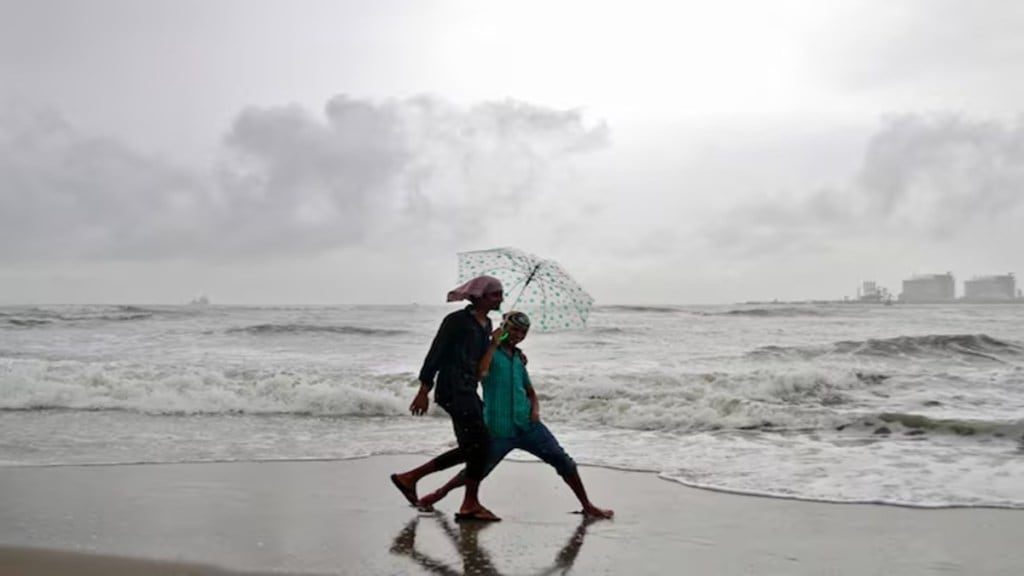By Madhavan Nair Rajeevan
August and September this year have seen several heavy rain events. With global warming, the frequency of El Nino and
La Nina events will increase which can affect the variability of the monsoon, explains Madhavan Nair Rajeevan
Recent heavy rainfall events
The heavy rainfall over Andhra Pradesh, Telangana, Gujarat and Rajasthan is as expected during the monsoon season. Past observations show that the frequency of heavy rainfall events leading to flash and urban floods is increasing in the Indian region, possibly due to global warming. If we consider heavy rainfall events of 150 mm/day, the frequency is increasing by about 2 events per decade. With rising temperatures, the atmosphere is able to hold more humidity and thus can stimulate cloud development. This season, we have seen many heavy rain events leading to flash floods and landslides as in Kerala.
The numerical weather prediction (NWP) models can’t accurately predict the amount of these heavy rainfall events. They usually predict too little heavy rainfall but too much light rain. This can be avoided by calculating the model-based Extreme Forecast Index (EFI). This has proven to be a very useful tool for forecasting extreme events. In the case of the recent heavy rainfall over Andhra Pradesh and Telangana, the EFI estimated by the IMD/IITM model and the ECMWF model clearly indicated an extreme event.
Has the distribution pattern changed?
An Analysis of observational data from 1875 onwards suggests there is no long-term trend in monsoon rainfall on a national average. However, there are large spatial variations in the long-term trends. East-central India, some parts of northeast India and states like Kerala have shown a decreasing trend in seasonal rainfall while some parts of North Karnataka, Maharashtra and Rajasthan show an increasing trend. However, the monsoon rainfall across India shows considerable multi-decadal variability (time scale 30 years), with some epochs having less rainfall and some epochs having more rainfall. We have now entered an epoch with more precipitation. On the monthly time scale, there has been an increasing trend in monsoon rainfall in September and a decreasing trend in July in recent years. The onset of monsoon over central India is delayed but the retreat of monsoon over northwest India is also delayed. The frequency of monsoon lows has decreased and the formation of the first monsoon depression over the Bay of Bengal during the season is delayed.
Role of El Nino and La Nina
El Nino and La Nina conditions are affecting precipitation patterns more frequently. In the last 5-6 years, we have experienced three consecutive La Nina events. Last year was an El Nino year, which is quickly transitioning back to La Nina conditions this year. This is unusual. Typically, a El Nino or La Nina event occurs in 3-7 years. El Nino and La Nina events cause a lot of variability in monsoon rainfall over India.
One year we can expect heavy rains and floods and the next year widespread droughts. Even though the amount of monsoon rainfall in 2023 was not very deficient, there were many districts with deficient rainfall categories. We need to address this high variability. We need to improve our early warning systems and take appropriate adaptation measures. With global warming, the frequency of El Nino and La Nina events will increase in the future, which can greatly affect the variability of the monsoon.
Impact on farming practices
The increasing frequency of extreme events and the changing characteristics of the monsoon can impact agriculture. There is an increasing trend in the duration of dry spells and a decreasing trend in the duration of wet spells. However, the frequency of heavy rainfall events has increased significantly in recent years. Half of the seasonal rainfall falls in a 20-30-hour period as heavy rains (20% of the time) and the remaining 50% of the rainfall falls as light to moderate rains 80% of the time. This has a serious impact on agriculture, water resource management, etc. The heavy rainfall that occurs in a short period of time runs off. The remaining rain falls as light rain and evaporates quickly. Therefore, proper management is required to store rain water. Observations suggest that hiatus days (number of days when the monsoon does not advance along the west coast and central India) are increasing due to the rising influence of mid-latitude events. Farmers should be sensitised to these changes and helped to adapt to new farming strategies.
Need to be a climate-resilient nation
The IPCC climate models suggest four trends: A slight increase in average seasonal monsoon rainfall in the Indian region, a significant increase in the frequency of heavy rainfall events, an increase in dry periods during the monsoon season and thus fewer rainy days, and late withdrawal of the monsoon from north-west India.
We should be prepared for the consequences of these changes and take the appropriate policy measures. Our cities are not designed to cope with the increasingly frequent heavy rainfall and flooding. Many a time, urban floods are caused by poor drainage systems. We also remove water bodies around cities and towns to construct buildings and townships. We need a weather-ready and climate-resilient nation. Preparations should start now.
The writer is former secretary, ministry of earth sciences.

